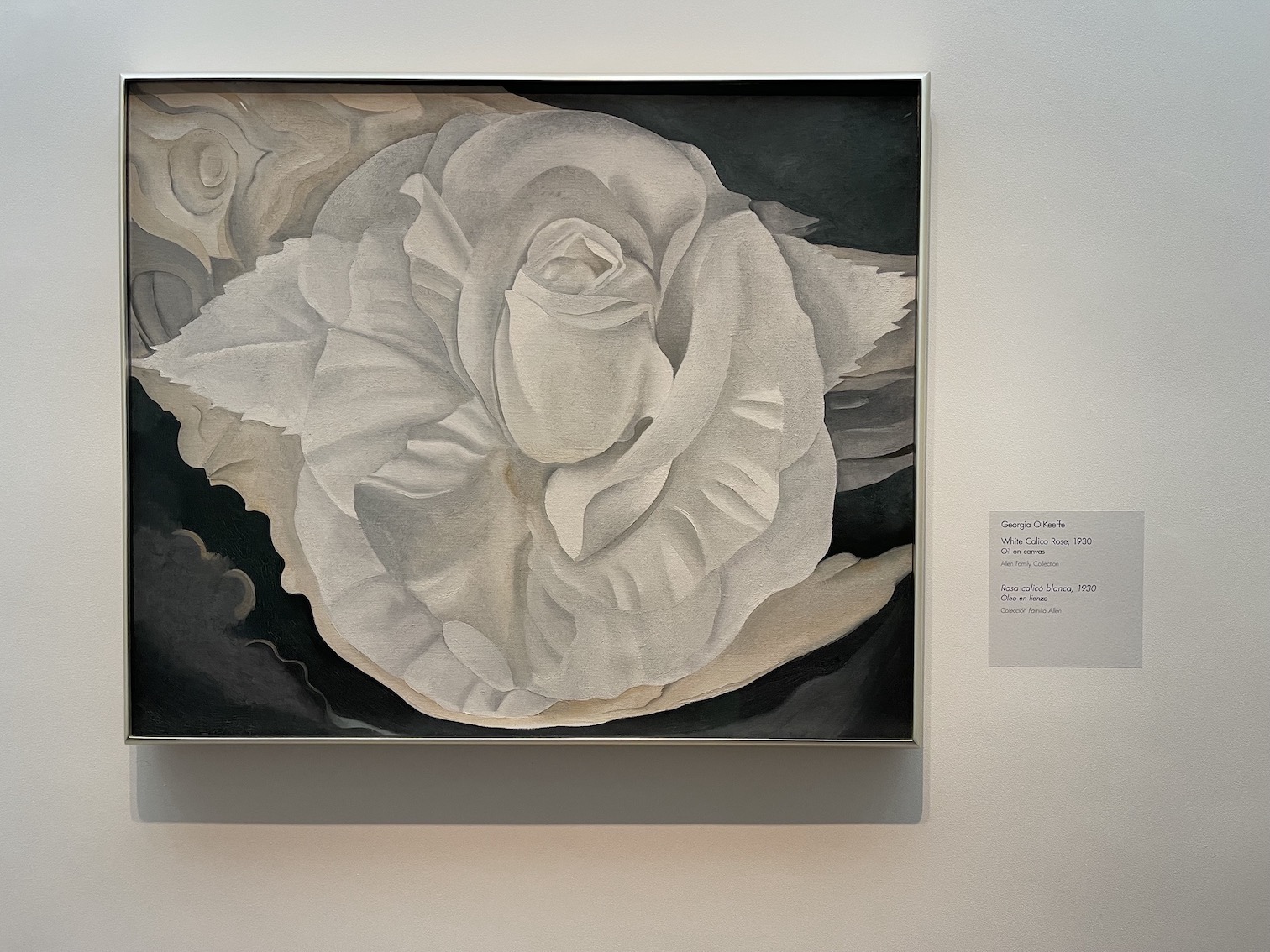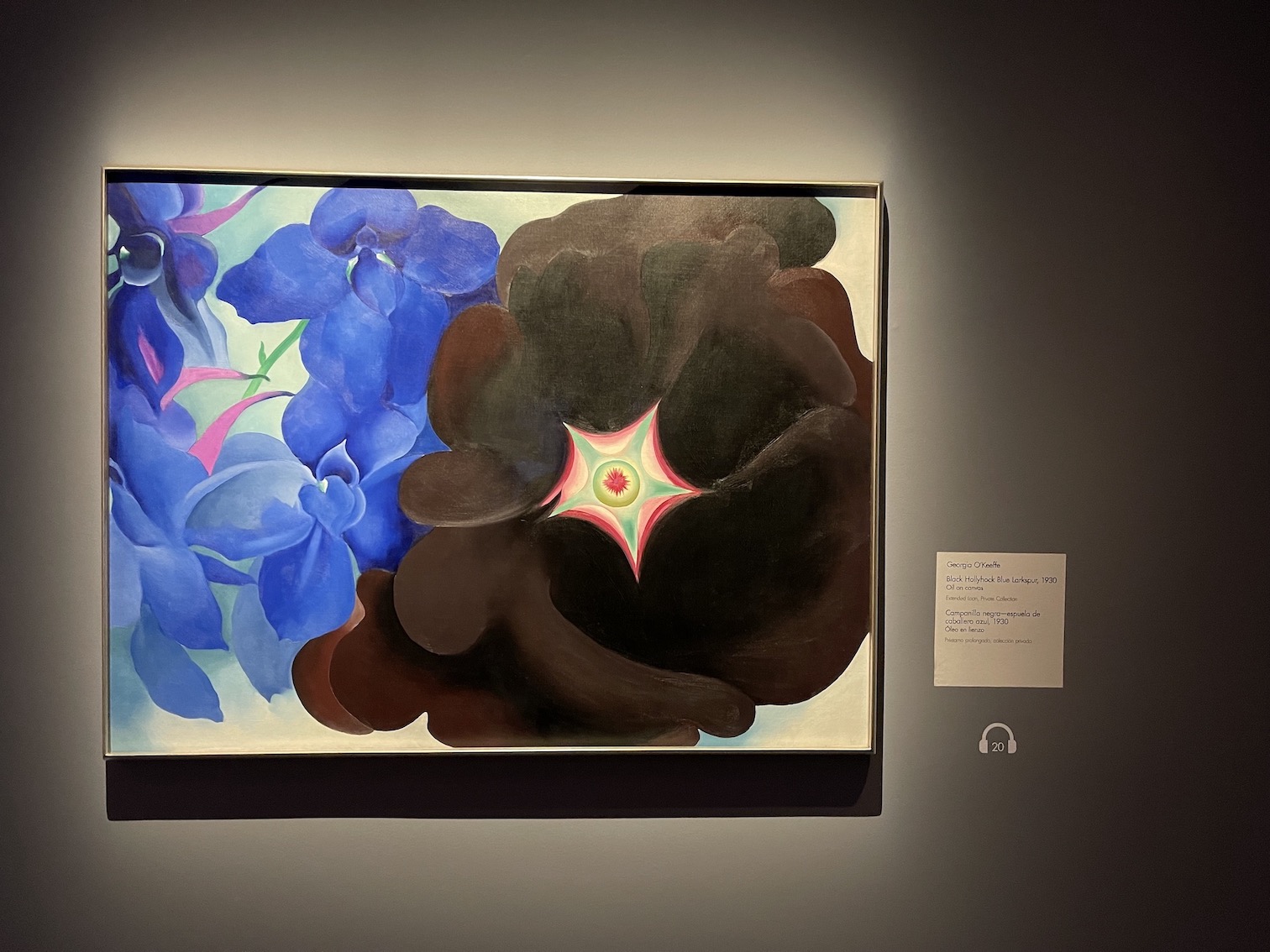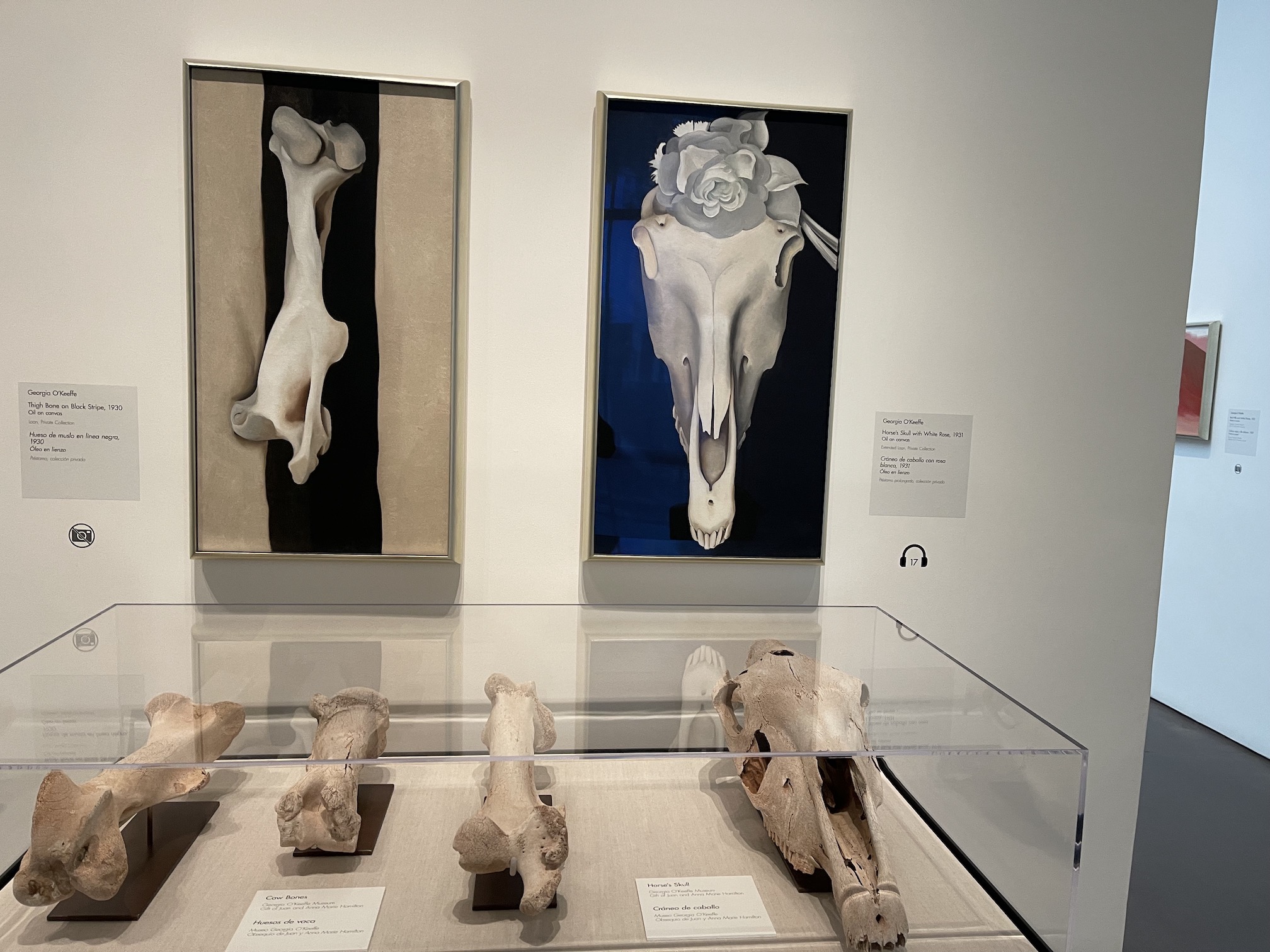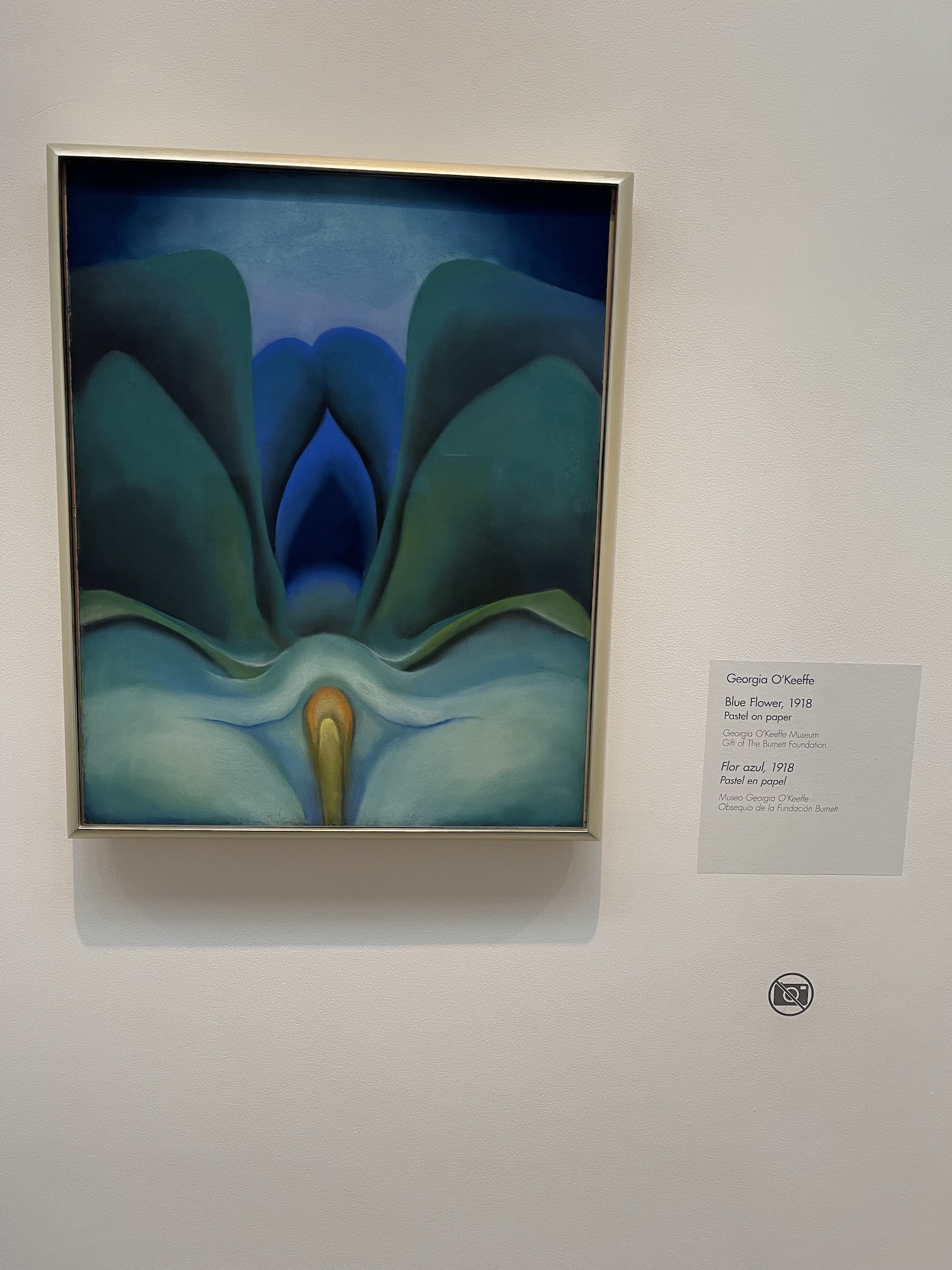This day started as most of them have, with me being lazy and drinking coffee to try to wake up. In general, this road trip has been scheduled around late mornings, one or two road trippy things, a late dinner and an even later evening. I’m usually in bed by 10:30 or 11:00 p.m. but not closing my eyes until between midnight and 1:00 a.m. It has actually been working quite well for me. Duncan is also a natural late riser, which helps.
Our plan today is to drive to Santa Fe and go to Pecos National Park and then see the Georgie O’Keefe museum. We have a reservation at the museum at 4:00 p.m. which puts us on a schedule. The first stop is the Tom Bolack dog park again to get Duncan some exercise before he ends up staying in his kennel in the hotel room this afternoon. We met another interesting person today. Sandy and her daughter were there with their dog, Flow (short for Florence Nightingale). Sandy said she had at one time pursued the doggy DNA test to see if Flow had any whippet in her. She had a larger chest and you could always see her ribcage definition. As it turns out Flow has a whole lot of breeds in her, but whippet was not one of them. Sandy had returned from teaching speech therapy in Anchorage, Alaska recently. She and her daughter were going to move to Mexico, but she still planned to take teaching contracts in Alaska (yes, in-person teaching, not virtual). And some of you think you’ve got bad commutes.
When we were done visiting and Duncan’s tongue was dragging we headed back to the hotel to check him into his kennel for the afternoon. When he’s all tuckered out all he needs are his two blankies and a bowl of water and he is reasonably content in his kennel.
Pecos National Park is set in an area referred to as the Glorieta Pass or gateway to the plains, between mountain and mesa. The area is a coming and going of peoples, cultures, and changing ways of life. If you want a really good timeline of the passage of people, power, and cultures take a look at the history and culture of Pecos from 3500 B.C. right up to today, according to the National Park Service. There is so much to see here (and in most of the national sites we visit) that an afternoon can really do no more than make you think about history, ponder your own insignificance, and pledge to take time to study more.
While it is only one small segment of the 5000 year timeline for Pecos, we both thought that the revolt of 1680 led by Po’ Pay of the San Juan Pueblo against their Spanish conquerors was the most interesting event. First, it was the only time any European invaders had ever been expelled from the country. Second, Dan’s Filipino history had left him with a similar historical background to the Spanish. Of course the grandeur of the remains of the Spanish mission church also intrigued us a lot. Here are a few of our pictures that put this symbol of Spanish power and control over the local indians and pueblo people into perspective.

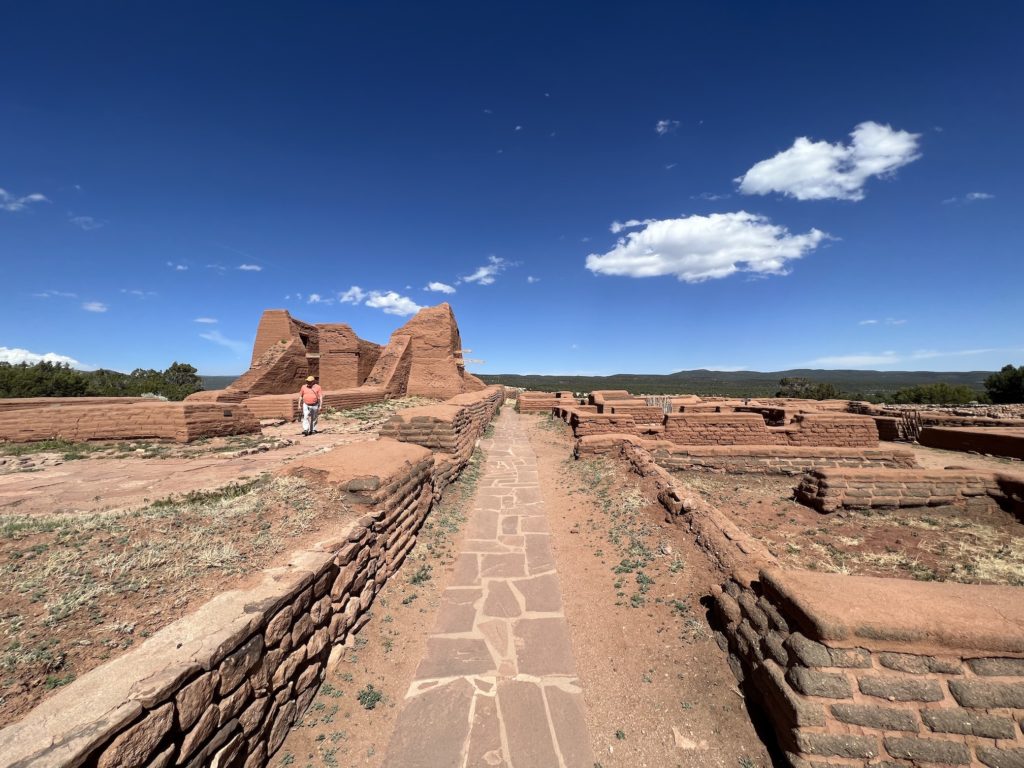
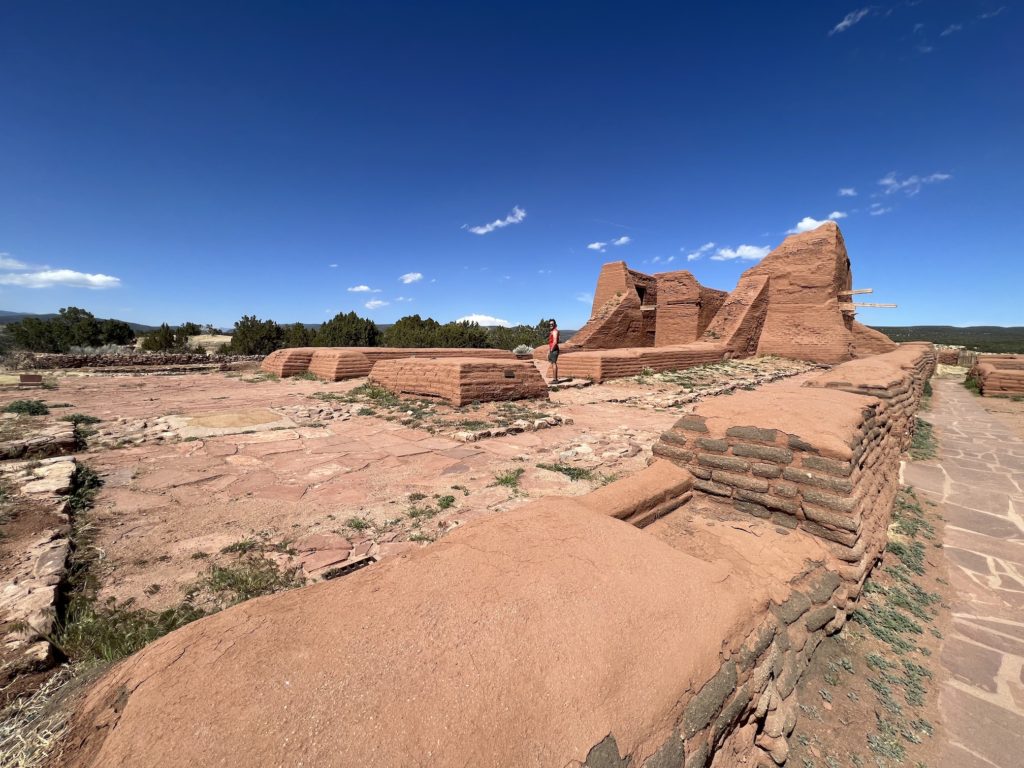

After Pecos we headed back into Santa Fe to the old downtown to visit a different sort of history and beauty, the Georgia O’Keefe Museum. I have known the name Georgia O’Keefe for years. I had a friend and neighbor who had several of her prints he had framed in his own reclaimed barn boards. Everything I had ever seen by O’Keefe was water colors of flowers so it was a surprise and education to me to find out that she also painted sky-scrapers and New York skylines, not to mention bones and sea-shells. This was an add-on stop suggested by my barn board framer’s son that I am very glad I was able to fit in. Here are a few of what I considered the highlights for me from her museum.
